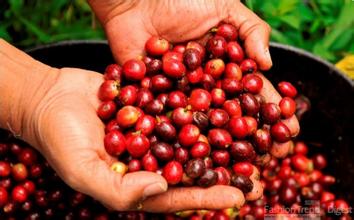Introduction to the altitude environment of how many coffee farms and producing areas in Kenya
Introduction to the altitude environment of how many coffee farms and producing areas in Kenya
Mainly by large farms (Estate) and cooperatives (Cooperatives) two types. The former generally has a large planting area and has independent coffee processing facilities. Most coffee production is done by a large number of small farmers, who form coffee cooperatives. The Coffee Cooperative Society employs special managers to supervise the coffee processing of its members, even to the point of managing each coffee tree.
Compared with shading planting in many high-quality producing areas, Kenyan coffee is obviously more spicy and unrestrained, and shade trees are not common. In addition, Kenyan coffee rarely participates in certification, variety and environmental factors make the use of pesticides necessary, and organic certification, which is popular in other countries, becomes rare in Kenya.
Located in KIAMBU area around Mount Mountain Kenya, about 1800 meters above sea level, it has beautiful scenery, pleasant climate, sufficient light and superior soil conditions. it belongs to fertile acidic red soil with loose soil, deep soil layer and good drainage. The PH value is between 5.5 and 6.5.
Kiambu producing area
[manor] SASINI
Volcanic soil
[variety] SL28
[altitude] 1500-2000 m
[rainfall] rainfall 1200 mm
[treatment] double fermentation
[harvest] April-June, October-December
[grade] AB (15-16 mesh)

Important Notice :
前街咖啡 FrontStreet Coffee has moved to new addredd:
FrontStreet Coffee Address: 315,Donghua East Road,GuangZhou
Tel:020 38364473
- Prev

Characteristics of Panamanian long-tailed Cuckoo Champion Honey in the treatment of Candle Coffee
Panamanian long-tailed cuckoo champion honey processing candle coffee taste origin: Danch Meng is actually NINETY PLUS's sub-brand Level up, the Ethiopian raw bean jointly promoted by the company and raw bean trader Bodhi Leaf, listed in 2013, Danch Meng in the local transliteration as Perfect approach (good way), is by Yejiaxue
- Next

Flavor description treatment of Brazilian yellow bourbon hand-brewed coffee taste grinding scale
A branch of Arabica species that, in addition to yellow bourbon, has red bourbon, orange bourbon, etc. (in addition to Kaddura, Kaduai, etc.). Bourbon species were first planted in bourbon island and Ethiopia, and are suitable for the growth of bourbon-grown coffee beans at an altitude of about 800-1900 meters. Relatively speaking, the output of yellow bourbon
Related
- Detailed explanation of Jadeite planting Land in Panamanian Jadeite Manor introduction to the grading system of Jadeite competitive bidding, Red bid, Green bid and Rose Summer
- Story of Coffee planting in Brenka region of Costa Rica Stonehenge Manor anaerobic heavy honey treatment of flavor mouth
- What's on the barrel of Blue Mountain Coffee beans?
- Can American coffee also pull flowers? How to use hot American style to pull out a good-looking pattern?
- Can you make a cold extract with coffee beans? What is the right proportion for cold-extracted coffee formula?
- Indonesian PWN Gold Mandrine Coffee Origin Features Flavor How to Chong? Mandolin coffee is American.
- A brief introduction to the flavor characteristics of Brazilian yellow bourbon coffee beans
- What is the effect of different water quality on the flavor of cold-extracted coffee? What kind of water is best for brewing coffee?
- Why do you think of Rose Summer whenever you mention Panamanian coffee?
- Introduction to the characteristics of authentic blue mountain coffee bean producing areas? What is the CIB Coffee Authority in Jamaica?

